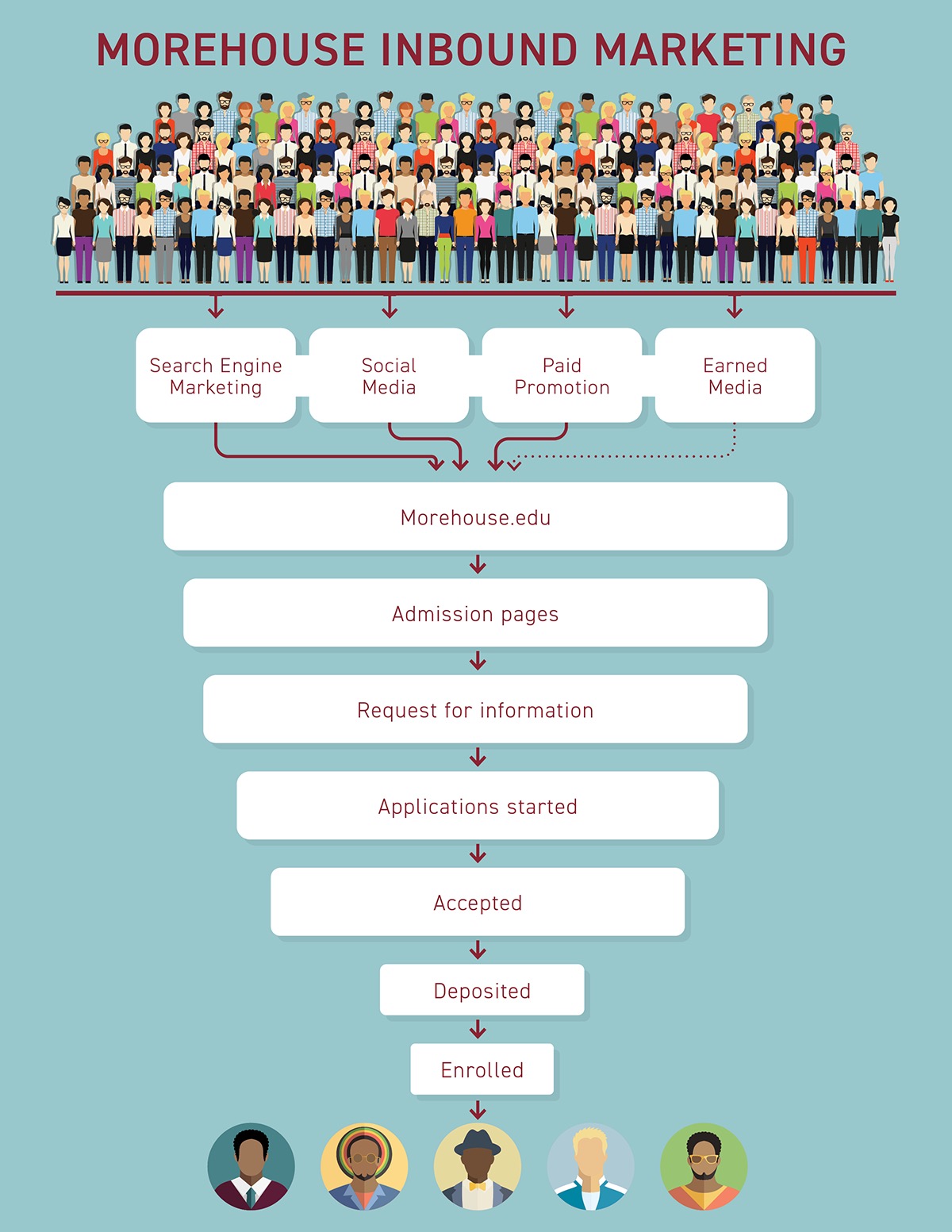Back To Blog
Practice what you teach: The $4.8 million case for centralizing and integrating university marketing
December 19, 2019Written by: Morehouse College
Doing marketing and PR within higher education is among the most complicated jobs imaginable. I tell my former colleagues working in consumer or corporate positions that it’s a lot like 10,000 of your customers living together in your company’s building and their parents live around the corner.
The crisis and contingency planning in university PR alone can eat up the best of us. The worst-case scenario in my former corporate PR and marketing jobs was the stock price dropping a few points. The worst-case scenario in university PR is enacting the active shooter plan and figuring out who calls the FBI, when to reach out to parents and staying behind while everyone else is evacuated. Six years ago, I thought the only difference was the stock options. I was wrong.
The recruitment marketing side of things aren’t that dire, but it’s no less daunting from a channel and content perspective. Your target audience is a teenager living a busy high school life while planning an adult life and career. Their influencers are parents, friends, school counselors and aspirational people (real and fictional) in the world at large – experienced through countless media platforms. Factor in the 12- to 18- month sales cycle during the prospect’s most formative years and you have a job wrapped in a riddle.
Thirty-four years ago when I was 16, universities had to coordinate two primary media: print and broadcast. Within those there was owned (school collateral sent snail mail), earned (media placements) and probably TV advertising. (If you were lucky your school had a Division 1 team and got on national TV once in a while.)
Today, the recruitment marketing funnel is a bit more complicaterd with many touch points and channels across the top.
Assuming you can master each of these channels, getting your content to look and feel the same in a print catalog, your web site, paid promotion on Facebook, search on Google, email marketing and videos during an event is no small feat. Success is a function of organizational design and having a centralized department directing all of these channels and the content that flows through them.
The fly in the ointment for many universities is mobile – the most important medium of this generation of high school students. According to Chegg 81% of todays teens have visited a college web site for admissions information using a mobile device. Unfortunately, according to Noel Levitz, only about half of colleges have a responsive web site.
Imagine if only half of all college admissions buildings had a front door.
Clearly, there are huge gaps and inefficiencies in this marketing model and it shines some light on why 4-year private colleges spend a median of $2,433 to enroll a single student – that’s $4.8 million for a freshman class of 2,000. This fall, 19.3 million new undergraduate students are projected to arrive on campuses in the United States. Even Siri had to use a calculator to figure out that spend.
Integrating all of these channels with an emphasis on mobile can drive these costs down, streamline processes and avoid the dreaded 15th email to the same student from three different departments at the same university. But getting your story coordinated internally is just part of it. Mapping it to the new careers-first logic being applied to college research is the last and most important mile.
However, leaning into this vocational positioning for most universities is a smidge thorny. It goes against generations of selling the self-realization destination and social status that comes with college -- but it can be done with smart brand positioning and flawless execution. And, more practically, staying on the high ground above the stigma some for profit schools have created. The good news is all of these new channels for reaching prospective students (mobile, search marketing, social media, video) are perfect platforms to engage in the discussion about career outcomes, self actualization or social impact.
It just takes planning and execution against a single strategy.
Channel coordination and consistent positioning is something every business and organization faces as it grows. Universities should know this better than anyone. Because many of their schools actually teach those lessons of integrated marketing communications within their degree programs every day.
No university in the world grants degrees in silo based marketing, but plenty of them practice it.

Morehouse Marketing and Communications
Worst case scenario in university PR is enacting an active shooter plan and calling the FBI
Imagine if only half of all college admissions buildings had a front door.
Tag(s):
Demand Generation
,
communications
,
university
,
marketing
,
recruitment
,
Inside Morehouse